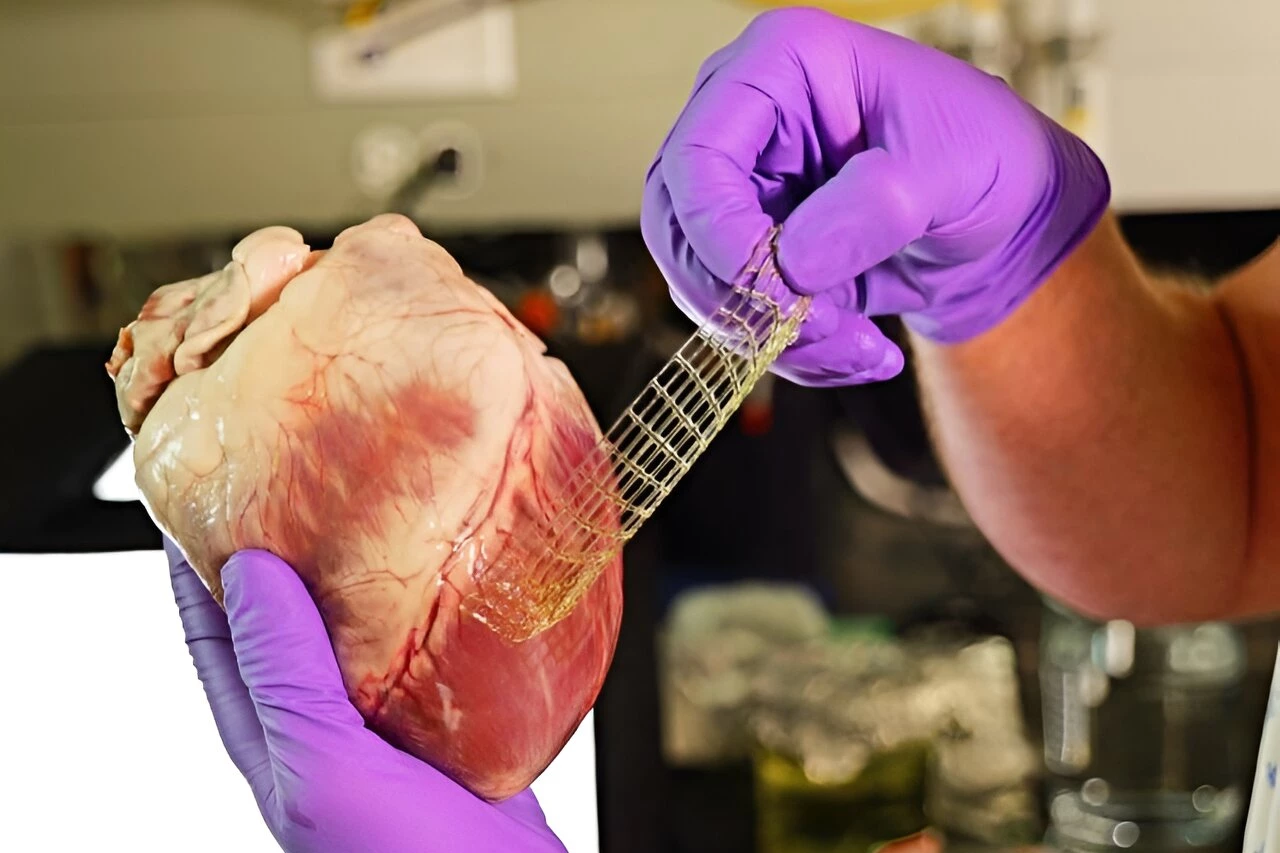A new medical 3D-printing method has been developed that takes its cues from the way tangles of worms interact in nature. The resultant material produced could patch up leaky heart parts or stabilize spinal discs, among other applications.
When developing materials that can be implanted inside our bodies, scientists have been looking at the use of hydrogels for some time. Use of the water-rich gels have been studied as a way to heal brain injuries and chronic wounds, function as a cartilage replacement that performs better than the real thing, and staunch the bleeding from wounds inflicted in battle. But despite their rubbery composition, the gels can break apart when applied to vigorous organs like the heart, or used to cushion forces between bones. They can also be fairy stiff.
"Imagine if you had a rigid plastic adhered to your heart," said Jason Burdick, a professor of chemical and biological engineering at University of Colorado at Boulder's (CU Boulder) BioFrontiers Institute. "It wouldn't deform as your heart beats. It would just fracture."
Seeking to develop a better medical hydrogel, Burdick and his colleagues turned to worms. Specifically they looked at the way in which groups of worms tangle themselves up in balls that mimic properties of both solids and liquids, and then untangle themselves. They then applied that model to molecular engineering, and created a material that has molecules arranged much like worms in a ball – a pattern that's known as entanglement.

They then created a new 3D-printing method termed CLEAR (continuous-curing after light exposure aided by redox initiation) to produce materials using the entangled molecules. The result is a mesh-like substance that is super strong yet flexible, much like the stronger tissues in our bodies. The new substance also sticks well to both human tissue and organs, making it a very attractive material for medical use. It could, for example, be placed on an organ to make a repair or deliver medicines, be used as needle-free sutures, or it could restrain bulging discs in the spine.
"We can now 3D print adhesive materials that are strong enough to mechanically support tissue," said co-first author Matt Davidson. "We have never been able to do that before."
Because the material is 3D printed, it can also be tailored for the needs of any one specific patient. The researchers have now filed for a patent for the material and plan future work to see how human tissues react to its presence. The team also says that the new 3D-printing technique could have applications outside of medicine.
"This is a simple 3D processing method that people could ultimately use in their own academic labs as well as in industry to improve the mechanical properties of materials for a wide variety of applications," said first author Abhishek Dhand. "It solves a big problem for 3D printing."
The breakthrough has been published in the journal Science. You can find out more about it in the CU Boulder video below.
Source: CU Boulder Today






